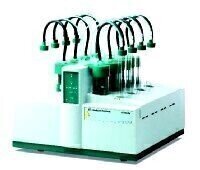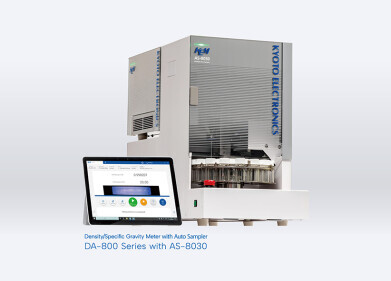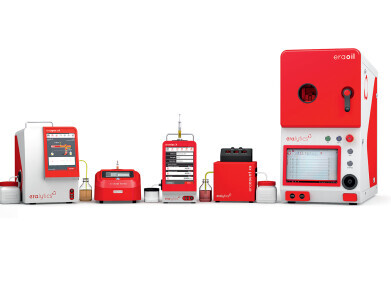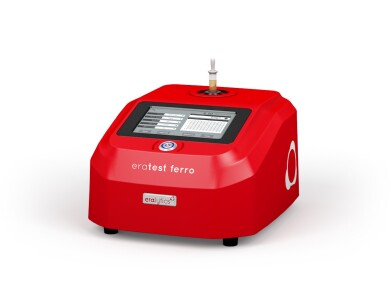Analytical Instrumentation
Determining the Oxidation Stability of Biodiesel According to EN 14112
Jan 10 2008
The method: oxidation stability according to EN 14112: The determination of the oxidation stability according to EN 14112 is an accelerated oxidation test. The sample is held in a sealed reaction tube at a constant temperature of 110 °C while a continuous flow of air is passed through the sample. The fatty acid methyl esters (FAME) in the sample are oxidized to peroxides as the primary oxidation products. After some time, the fatty acids are completely decomposed, forming the secondary oxidation products. In addition to volatile organic compounds, these are lowmolecular organic acids, mainly formic and acetic acids. An air flow transports them to a measuring vessel containing distilled water as the absorption solution. Its conductivity is recorded continuously; as soon as volatile carboxylic acids are formed in the sample, this is indicated by an increase in conductivity. The time that elapses until the secondary oxidation products are detected is known as the induction time and is a measure of the oxidation stability of the sample. The measuring setup: The 873 Biodiesel Rancimat has two independent heating blocks allowing a total of eight samples to be analyzed simultaneously. Each measuring position can be started individually. As soon as the measurement has been completed, the measuring position is immediately ready for a new sample, which means that the instrument can be used to its full capacity.
Digital Edition
PIN 25.1 Feb/March
March 2024
In This Edition Safety - The technology behind the ION Science Tiger XT - Safety with ammonia and LOHCs as hydrogen carriers Analytical Instrumentation - Discussion on new tribology te...
View all digital editions
Events
Apr 28 2024 Montreal, Quebec, Canada
Apr 30 2024 Birmingham, UK
May 03 2024 Seoul, South Korea
May 05 2024 Seville, Spain
May 06 2024 Riyadh, Saudi Arabia


















